- Large Buildings
- Posted
Eco Equity
Set in the shadow of Macgillycuddy's Reeks, Killorglin, County Kerry is a dramatic and rugged location best known as a tourist destination and home to Puck Fair. It’s also home, however, to one of Ireland’s most successful companies, FEXCO, which has opened its new low-energy corporate headquarters in the town. Construct Ireland's Jason Walsh visited the site to find out about the strategies used to promote sustainability in a high-tech environment.
FEXCO, originally the Foreign Exchange Company of Ireland, is a business success story. Focussed on global payment services and financial transaction processing, FEXCO distributes millions of international payment transactions annually and is perhaps best-known as a Western Union money transfer Super Agent and operator (partnering with An Post) of the Irish government's Prize Bonds. Founded in 1981 as a bureau de change, FEXCO’s business rapidly developed into the high-tech financial transaction market. As a result of its business being computer-oriented, when it came to designing its new head office FEXCO had specific space and cooling requirements that had to be addressed in the building’s design.
Industrial design for rural landscapes
Completed in 2005, the building was designed by architect Deirdre Waddington, who had previously worked extensively in central and west Africa as well as on several ecclesiastical buildings in Britain. Built to accommodate 200 staff, the site, an abandoned factory situated in a disused railway yard on Iveragh Road, was acquired by FEXCO eighteen years prior to its construction.
According to FEXCO, the site’s central location “seemed to demand a structure tall enough to hold its own against the adjacent town centre buildings.” Brian McCarthy, the company’s founder and Chairman asked Deirdre Waddington to incorporate the remnants of the 1885 limestone railway station, with its distinctive brick arched doorways, into the 3,000 sq. metres of new office accommodation needed within the footprint of the old factory.
The internal garden
This posed the design problem of relating two storey offices to a low-lying single storey structure, which had a double-pitched slate roof – and to do this without interrupting FEXCO’s communications-intensive business.
Deirdre Waddington’s solution was to move the main entrance from the south façade to the western side of the new building and create a new two storey rectangular steel-framed structure with a mono-pitched roof oriented at 10 degrees to the original building. The new structure is linked to part of the factory shed, which needed to be maintained because it housed the communications room by a top-lit foyer widening out towards a central trapezoidal courtyard.
The entrance doors now open into an airy reception space, which leads directly to the heart of the building where the double-height staff-canteen area overlooks an internal garden. South-facing curtain walling to the canteen is screened by horizontal sun breakers spaced to allow views of the McGillycuddy Reeks from the first floor corridor of the adjoining offices. Maximum advantage has been taken of the north-facing aspect in order to minimise solar heat gain while openings on the eastern and western facades exposed to the low morning and evening sun have been kept comparatively small.
Precision engineering
Of course, alongside its architectural design, the building is also significant for its attention to environmental sustainability.
Central to the building’s sustainability measures is a Solterra geothermal heating and cooling system designed by Dunstar.
However, before such a system can even be contemplated a building must be fit for its use. Dunstar’s founder, Dr. Paul Sikora, a physicist by profession, says the FEXCO office is just such a building: “[FEXCO] were quite positive about incorporating sustainable elements in whatever way they could. As the company expanded it took some trouble to find an architect who was similarly enthused. There was a lot of care taken with the [building’s] envelope.”
Dunstar designed a geothermal heating and cooling system that draws on three bore holes drilled into aquifers below the site. The offices are fully air-conditioned but use is made of natural ventilation in the foyer and canteen. Finally, a solar panel on a south facing roof supplies hot water to toilets and the canteen.
The double-height staff canteen area
“One of the things that made it challenging was the heat from the IT activity,” says Sikora. “You can have a requirement for both heating and cooling at the same time.”
The value equation
As always, cost is a factor – and geothermal systems don’t come cheap. The cost of the plant room and wells was of the order of €250,000, plus VAT.
Despite the installation cost, Sikora sees the system as a valuable investment that will lower costs over time: “For a similar system using LPG or oil, the payback should be around nine to ten years – and there have been fuel cost hikes since then,” he says.
Sikora is adamant that geothermal energy is an efficient and useful source of heating and cooling: “Heat in the ground is just slightly less refined than what we need. A heat pump just refines it and you don’t destroy any resources in the process of doing so,” he says.
The Solterra geothermal combined heating and cooling system control panel “The cooling capacity is a little over 300kW and the heating capacity is close to 400kW but [the building] needs much less – heat is at around 200kW and the cooling runs to about 300kW,” he says.
“When the system is working its full cooling output is probably using 70-75kW of electricity and that same input could deliver 400kW of heat. It remains more cost effective and CO2 effective than oil or gas.”
On the point of heat pumps requiring electricity which in, Ireland, is usually generated from fossil-fuel sources, Sikora says: “It should push us to develop more solar, wind and tidal power.”
Clearly, Ireland has seen an incredible growth in renewable energy and energy efficiency in the last five years. According to Sikora, geothermal will have a greater role to play as ever-more owners of large buildings begin to address their energy requirements with renewable sources: “The whole of the Irish [renewable energy] industry is very young – very few firms were active more than four years ago.”
Indeed. As interest in sustainable energy sources has moved into the mainstream, driven more by rising energy costs and a posteriori predictions of oil shortages than a priori environmentalism, Ireland has suddenly found itself with a plethora of energy options and suppliers.
The Solterra geothermal combined heating and cooling system
According to Sikora, appropriate choices must be made depending on the scale required: “Geothermal differs from solar in that engineering skills are required in every installation,” he says. “A one size fits all approach will end up very far off the mark.
“We’ve been doing research and development [for] over twenty years and learnt a lot of tricks of the trade. The Irish climate – and even geology – is rather different from that in Scandinavia or even continental Europe,” he says.
Installation issues
The primary mechanical contractor on the project was Killarney Mechanical Services, to whom Dunstar was a sub-contractor. Jerome Kennedy from Killarney Mechanical Services explains that the Fexco was something of a first in terms of scale, though his company had worked with Dunstar previously on the Motor Tax office in Tralee.
The Solterra geothermal combined heating and cooling system distribution header for hot water Completed in 1999, the Motor Tax office was the first high-performance environmentally sustainable building in the country.
However, Kennedy is convinced that it will not be the last such installation: “It’s definitely going to become more common when you have these large office spaces that need both heating and cooling,” he says.
“The building is working so well that FEXCO’s staff in other buildings want to look into it,” he says.
In fact, work has already been completed on a similar project: “We’ve done an identical system in the building next-door, a joint venture between Laune Properties and Kerry County Council,” says Kennedy. “It was handed over just before Christmas 2006.”
Neilus Hunt of Malachy Walsh and Partners, consulting engineers on the project explains how the initial decision to go with geothermal was made: “We brought on board a geologist to investigate whether there was sufficient water in the ground [to supply a heating and cooling system].
“The architect, Deirdre Waddington, was of great help to us, especially putting in enough insulation. [In fact] the main point about the Fexco building was the willingness of the client to try something different and of the architect to spend more on insulation.
Hunt is understandably upbeat about the project’s success: “Comfort levels are critical to staff comfort – and, hence, work. If it can work in a building like this, it can work anywhere,” he says.
“The geothermal system is working mostly at cooling. Even in the depths of winter it’s in cooling mode. It has a modulating compression so it can react [to internal conditions] as necessary.”
According to Hunt, in fact, the only reason the building uses solar power for heating water is a health and safety issue, designed to inhibit the growth of bacteria: “The geothermal operates most effectively at 30 to 40 degrees. To kill off Legionnaires’ [disease] you need to go up to 55 degrees.”
As noted above, FEXCO is a technology-centric business with the majority of staff operating computers. Obviously this had an effect not only of the building’s architectural design but also in terms of heating and cooling requirements and even the heating system’s layout.
As Sikora says: “The thing that did the most dictating of the services was the building’s setup and placement of the IT equipment. We couldn’t use underfloor heating across the rooms due to the presence of cable ducts under the false floor.”
As a result, the underfloor heating is confined to the edges of rooms and workstations are kept away from this area. Despite the compromise, it works perfectly well.
The building’s ventilation system, meanwhile, features three air-handling units: “Cooling air comes in from the air-handling units, pushed into vents and through the rest of the building,” says Sikora.
“An air-handling unit is essentially a big box where the air is brought in, filtered, partially exhausted if it’s polluted, and topped-up. It’s a box with filters, fans, heating and cooling systems. The whole philosophy is to change the condition of the air as little as possible to create an ideal environment.”
Due to the presence of cable ducts for workstations across the centre of the floor, underfloor heating was confined to the edge of the rooms There are a total of three wells supplying heating and cooling to the FEXCO building. The shallowest bore hole is 60-70 metres and the deepest is 110-120 metres: “There are submersible pumps at the bottom of the wells. Each well has a different water delivery capacity and the [building management] computer determines how much is required and chooses an appropriately yielding well,” says Sikora.
“It differs in that any other form of ground source would not be practical here as there isn’t enough space on-site.”
In capacity terms, Sikora’s system at FEXCO’s headquarters claims to be the largest heat pump in Ireland. It is designed around two water-to-water heat exchangers, one dumps heat into the well and the other extracts it.
The cold water temperature is maintained at 6 degrees while the hot water is held between 45 and 50 degrees, all controllable from the building’s computerised management system.
Sikora predicts, based on actual performance of a similar system he designed for the Lewis Glucksman art gallery, up to 75 per cent energy reduction, post-installation.
The primary heat pump has an estimated lifespan of 25 to 30 years: “In general it’s much longer-lived than combustion equipment,” Sikora laughs.
Despite the growing interest in both geothermal energy in general and Sikora’s unique heating and cooling designs, he does admit being sometimes faced with total confusion when explaining how it works to the public: “It’s a problem that affects everyone in the business, people say ‘How can you take heat out of something cold?’
“People don’t think about fridges and the heat they generate – looking for heat in a cold place offends people’s intuition.”
Selected project team members:
Client: FEXCO
Architect: Deirdre Waddington RIBA
Contractor: Pat Mahony Construction Ltd.
Consulting Engineers: Malachy Walsh and Partners
Mechanical and Electrical Engineers: Killarney Mechanical Services
System: Dunstar Ltd.
Value: €6.3 million
- puck fair
- killorglin
- fexco
- Geothermal
- heat pump
- dunstar
- cooling system
- underfloor heating
- solar panel
Related items
-
 Unipipe launch easy underfloor heating for upper floors
Unipipe launch easy underfloor heating for upper floors -
 Built Environment completes ‘mammoth’ MVHR installation
Built Environment completes ‘mammoth’ MVHR installation -
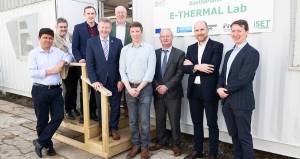 State-of-the-art heating test lab opens at GMIT
State-of-the-art heating test lab opens at GMIT -
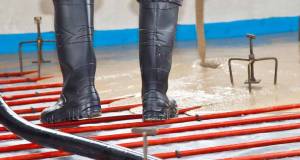 SMET screed boosts heating at Cork passive house
SMET screed boosts heating at Cork passive house -
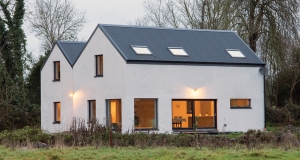 Farmhouse-inspired home goes passive on a shoestring
Farmhouse-inspired home goes passive on a shoestring -
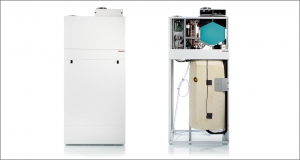 Combined air & underfloor heating ideal for Irish passive house — Nilan
Combined air & underfloor heating ideal for Irish passive house — Nilan -
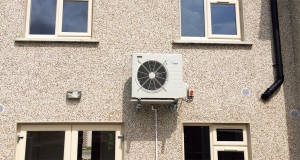 Daikin heat pumps installed at new low energy Wicklow development
Daikin heat pumps installed at new low energy Wicklow development -
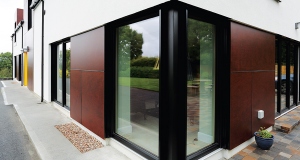 How to rescue a 1970s bungalow
How to rescue a 1970s bungalow -
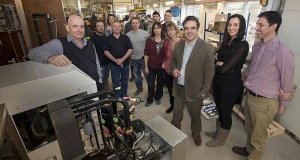 Lord Taylor to chair award winning Kensa Heat Pumps
Lord Taylor to chair award winning Kensa Heat Pumps -
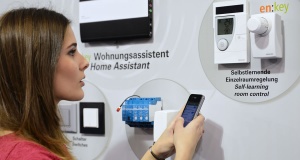 Passive house asserts itself at Frankfurt trade fair
Passive house asserts itself at Frankfurt trade fair -
Hemp lime
-
Sustainability in store

